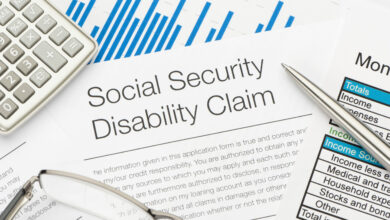How to Identify Potential Fire Hazards in Your Home

A fire in your home can be devastating, both emotionally and financially. While it’s crucial to have smoke detectors and a fire escape plan, it’s equally important to identify and address potential fire hazards before a fire starts. One way to ensure you’re covering all bases is to consider the cost of a fire risk assessment, which can help identify and mitigate potential hazards in your home. In this blog, we’ll explore common fire hazards in the home and provide tips on how to identify and address them to keep your family safe.
Understanding Common Fire Hazards
Electrical Faults
Electrical issues are one of the leading causes of house fires. Faulty wiring, overloaded circuits, and damaged cords can all pose a significant risk. Pay close attention to signs of electrical problems, such as flickering lights, frequently tripping circuit breakers, or outlets that feel warm to the touch. Ensure that all electrical installations are carried out by a qualified electrician and avoid overloading outlets with too many appliances.
Cooking Equipment
The kitchen is often the center of activity in a home, but it’s also a common source of fires. Unattended cooking, grease buildup, and faulty appliances can all lead to kitchen fires. Never leave cooking unattended, and keep flammable items like oven mitts and paper towels away from the stove. Regularly clean your oven and stovetop to prevent grease accumulation, and make sure all kitchen appliances are in good working condition.
Heating Devices
Space heaters, fireplaces, and other heating devices can pose significant fire risks if not used properly. Ensure that space heaters are placed on a stable surface and kept away from combustible materials such as curtains and furniture. Have your chimney inspected and cleaned regularly if you use a fireplace, and avoid using heating devices with damaged cords or exposed wires.
Flammable Materials
Many everyday items in your home can be highly flammable, including paper, cloth, and cleaning products. Store flammable materials away from heat sources and follow safety instructions when using and storing items like gasoline, paint, and aerosol sprays. Ensure that all flammable materials are kept in proper, labeled containers and stored in well-ventilated areas.
Smoking
Smoking indoors is a significant fire hazard. Cigarettes, cigars, and other smoking materials can easily ignite combustible materials, leading to dangerous fires. If you smoke, do so outside and ensure that all smoking materials are properly extinguished before disposing of them. Avoid smoking in areas where flammable materials are stored, and use deep, sturdy ashtrays to prevent accidental fires.
Candles
Candles can create a cozy ambiance but also pose a fire risk if not used carefully. Always place candles on a stable, non-flammable surface and keep them away from curtains, papers, and other combustible materials. Never leave candles unattended, and ensure they are fully extinguished before leaving a room or going to bed.
Gas Appliances
Gas appliances, such as stoves and heaters, can pose a serious fire risk if not properly maintained. Ensure that all gas appliances are installed by a qualified technician and have them regularly inspected for leaks or other issues. If you smell gas in your home, evacuate immediately and contact your gas provider or emergency services.
Tips for Identifying Potential Fire Hazards
Regular Inspections
Conduct regular inspections of your home to identify potential fire hazards. Check for signs of electrical problems, inspect heating devices, and ensure that cooking equipment and flammable materials are stored safely. Look for any clutter that could obstruct fire escape routes or accumulate near heat sources.
Install and Maintain Smoke Alarms
Smoke alarms are a vital component of home fire safety. Install smoke alarms on every level of your home and test them monthly to ensure they are working correctly. Replace the batteries at least once a year and replace the entire unit every 10 years or as recommended by the manufacturer.
Create a Fire Safety Plan
Develop a comprehensive fire safety plan that includes identifying potential fire hazards, establishing fire escape routes, and creating a plan for family members to follow in case of a fire. Practice regular fire drills to ensure everyone in the household knows what to do and where to go in the event of a fire.
Educate Your Family
Educate all members of your household about fire safety. Explain the risks associated with different fire hazards and ensure everyone knows how to recognize and avoid potential dangers. Encourage responsible behavior, such as not leaving cooking unattended and properly extinguishing smoking materials.
Professional Inspections
Consider having your home inspected by a professional fire safety expert. They can provide valuable insights into potential fire hazards and recommend improvements to enhance your home’s fire safety. Professional inspections can help identify issues that might be overlooked during routine checks.
Conclusion
Identifying and addressing potential fire hazards in your home is essential for protecting your family and property from the devastating effects of a fire. By understanding common fire hazards, conducting regular inspections, and implementing effective fire safety measures, you can significantly reduce the risk of a fire in your home. Additionally, consulting with a professional service like EICR Cert for comprehensive safety assessments can further enhance your fire prevention efforts. Remember, fire safety is an ongoing process, and staying vigilant can make all the difference in ensuring a safe living environment for you and your loved ones, If you want to stay updated with posts like this, please follow us on Usa Tech Magazine.




